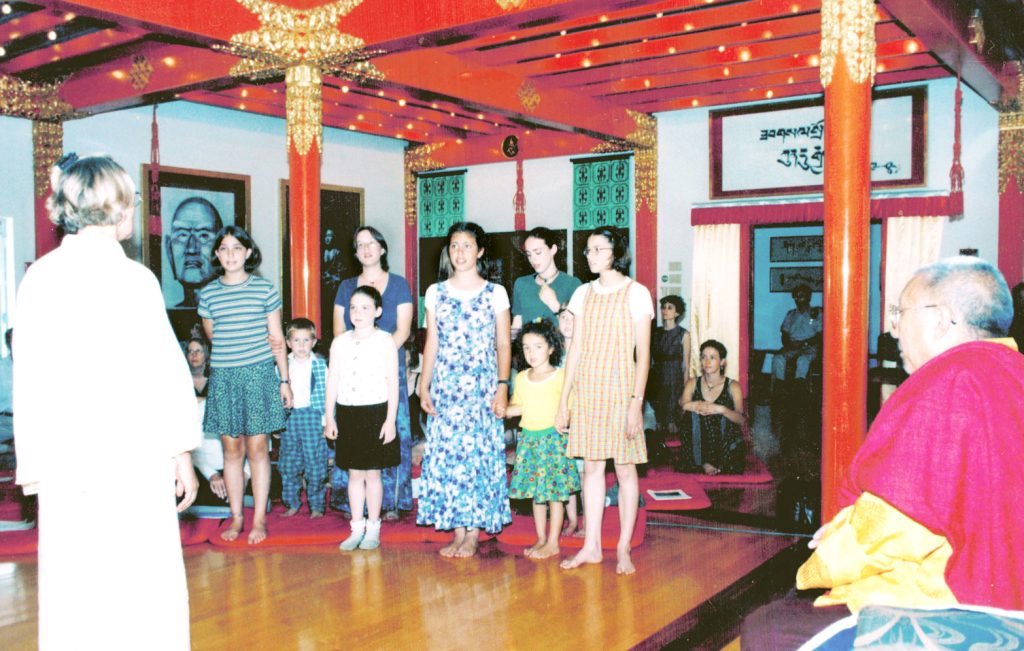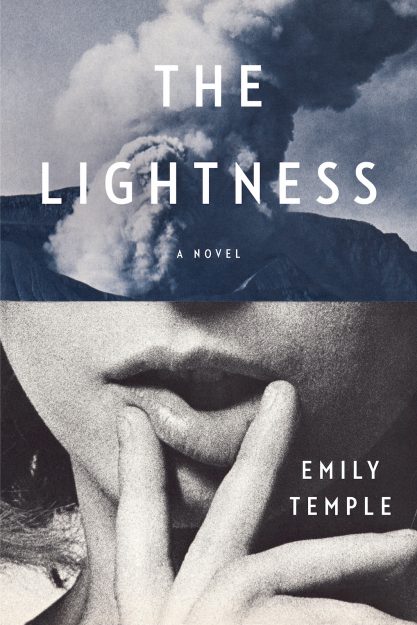Emily Temple’s debut novel, The Lightness, is set in a summer camp for “bad girls” high in the mountains at a “pan-spiritual contemplative community” known as the Levitation Center. The teenage girls meditate, practice archery, and contemplatively arrange flowers. But for the runaway-protagonist, Olivia, and her friends, their focus that summer is learning to levitate, and the dreamy 20-something gardener they think can teach them. This training in the supernatural, however, is advanced, and their pursuit leads them down a dangerous and complex path in this coming-of-age story.
With references to “inherent goodness,” abusive teachers, and unreliable authorities, it’s hard not to think of Shambhala Buddhism and the revelations of the past few years that have led its leader, Sakyong Mipham Rinpoche, stepping down. Temple grew up practicing in the Shambhala community, and her experience shapes The Lightness, published by HarperCollins in June.
In the following interview, Tricycle talks with Temple, who also is an editor living in Brooklyn, and Maya Rook, a historian and former member of Shambhala. They discuss the new book as well as growing up in the tradition and spending their summers at the Karme Choling retreat center in rural Vermont, where their parents received teachings from Khenpo Tsultrim Gyamtso Rinpoche, a Tibetan Buddhist teacher.
I was doing a good amount of reporting two years ago when Project Sunshine started releasing reports on abuse in Shambhala. It was hard to not think about the abuse and power dynamics while reading The Lightness. And at the time, we didn’t hear a whole lot from women in Shambhala—we heard from teachers and lawyers and spokespeople. I realize your book is fiction, but it’s also a great opportunity to talk about abuses of power from a woman’s perspective and how this book fits into the time that we’re living in.
Emily Temple (ET): I started writing it before any of the reports of the Sakyong’s abuse and misconduct came out, but as has become more and more clear to me in my life, this has been a part of the Shambhala community as well as almost every community in which there’s a hierarchy and men are in power. I remember as a kid thinking that Buddhism in general, and Shambhala in particular, was better than other religions and systems. Part of the writing of this book was dealing with the fact that I’m finding this not to be true. I still think Shambhala is “more right” than other systems, especially on a metaphysical level. But I was very disappointed to realize that these same hierarchies and abuses of power were happening in this world that I loved so much and felt so safe in as a child.
I didn’t mean to start with such a hardball. Oops.
ET: Just jump right in.
Can you both tell me how you know each other? That’s an easy question to start with.
Maya Rook (MR): We know each other from growing up in Shambhala. Our parents attended the same retreat program every summer with Khenpo Tsultrim Gyamtso Rinpoche. I don’t remember exactly when you started coming to the program, Emily—I started going in ’92 or so.
ET: I also can’t quite remember. It seems that my parents went from basically the time I was born until I was a senior in high school. There were a lot of kids around our age and they set up a makeshift camp for us next to the lake. I remember it being this perfect, idyllic, fun experience that I could not explain to any of my friends at home.
MR: I’ve never felt represented in a book. It’s fiction, but there are certain elements from my childhood that just don’t show up in fiction. And so it was really incredible for me to see little pieces taken from some of the things we did at Karme Choling [a Shambhala retreat center in Barnet, Vermont] and also a capturing of the magic of that place.
ET: I’m glad I captured the magic. But it really does feel like magic to me—it’s still one of my favorite places in the world.
Maya, what are some of those little pieces?
MR: I hadn’t thought about the electric fence in a while. It was a very low-level electric fence, and sometimes for fun the kids would touch it and get a little shock, or hold a piece of grass to it. And that they divided people into tiger, lion, garuda, and dragon groups. We were given a lot of freedom during those summers and trusted to do our own thing. We had people who were watching us and guiding activities and things like that, but for a lot of those summers I remember running around in the woods and having that freedom.
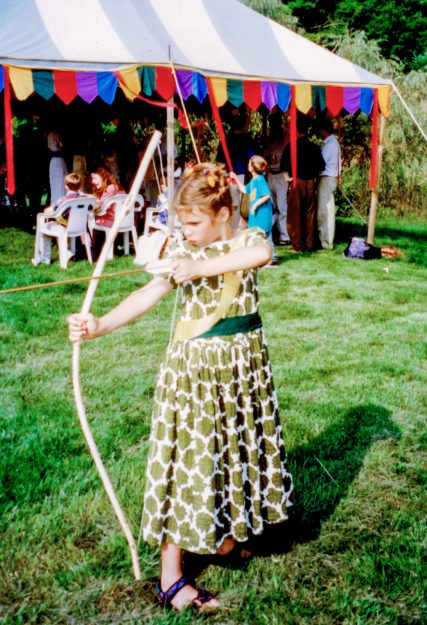
ET: Yeah, it wasn’t organized like a family camp. I remember having meditation instruction in the mornings in a tent, and there was one summer when we did a coming-of-age ceremony where we went into the woods, made a bow with our Swiss Army knife and shot an arrow.
MR: Places like Boulder, Colorado, and Halifax, Nova Scotia, had a lot of us Dharma Brats [a nickname for American Buddhist children] there, but I grew up in the Albany area. I didn’t have any friends at home who understood. In some ways, there was something about it that made me feel really special, and in other ways made me feel very different from other people.
ET: I felt exactly the same. My friends all called it “Buddhist Camp” because the closest analogy they had was the Jewish Community Center. The Syracuse Shambhala Center is my dad’s garage. It’s a very limited community. And yeah, the same feeling of both difference and real specialness that we had access to something that seemed bigger, enchanting, and separate.
And your parents were there for a meditation retreat? What were they doing exactly?
ET: My understanding of it is that [Tibetan teacher] Khenpo Rinpoche was continuing [Shambhala founder] Chögyam Trungpa’s teachings for advanced students. We must have been allowed into some of the evening talks, because I have memories of him on his throne.
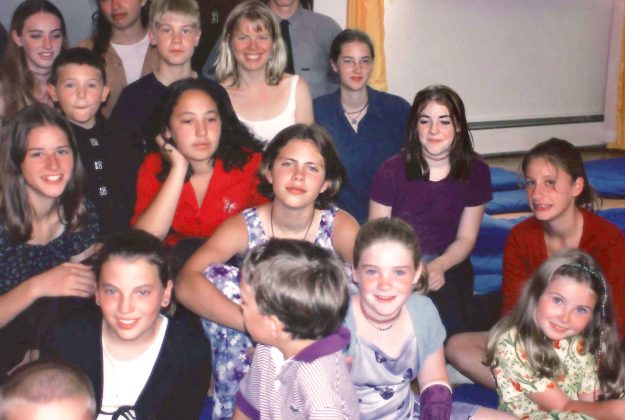
The Lightness is set in a summer camp. Did your own experience at Karme Choling set the scene?
ET: I wanted to distance myself from my actual experience, because nothing happened to me during those summers except that I had a great time. I know that mindfulness techniques and meditation are used to help teenagers in situations where they are acting out, so I turned the camp into a place you might go if you got into too much trouble.
Your parents are a part of Shambhala. Do you have your own practice?
ET: I did Shambhala training on my own when I was in college. I just never found the right group and I gave up on the notion of community and continued my own practice. Part of it was that I was always the youngest person there—everyone would pat me on the head like I was this oddity. Maya, I know you went pretty far.
MR: I went into the center of the mandala.
ET: All the way.
MR: I started Shambhala training when I was 12. I found this profound meditation practice that was helpful for me navigating middle school and the complexities of that. By the time I finished college I had finished most of Shambhala training and the Sacred Path [higher levels of training beyond basic meditation]. And then I stepped back for a very long time—I just wasn’t ready to take the next step. I came back for the meditation practice and did another Dathun [month-long meditation retreat].
I started going very deep after that. I worked at the meditation center in New York City from 2013 to 2016. It was a crisis—we couldn’t afford the rent and everybody stepped down from their positions. We did a lot to try to save the center, but ultimately I feel that we got pushed out.
What happened next?
MR: I had accepted a job working in the Sakyong’s home as a jusung, which means “lineage protector.” I was essentially a nanny, and that was one of the most incredible experiences of my life and also ultimately one of the most devastating, because I saw all those power dynamics and patterns of abuse that really came to light during Project Sunshine [an initiative that exposed patterns of abuse in the Shambhala community]. I never witnessed any [abuse] when I worked for the Sakyong, but I don’t doubt any of those stories because there was something not right at the center of the mandala.
ET: I’ve been thinking about this a lot. At the beginning of our conversation I said, “Oh, this is how it works in all hierarchical systems where men have power.” But I do wonder whether there’s something wrong at the core of Shambhala. One of the things that I find pretty disheartening is that I can’t imagine being a young person who comes to Shambhala now, seeing what the system is. Right now, because the Sakyong is the only empowered guru in the organization, it’s his bat and ball—you have to play his game or you can’t play.
What do you think, Maya? Is there a specific issue with Shambhala itself or is it more that any time a person is venerated, there’s going to be some space for abuse?
MR: I think there’s something specific to Shambhala, but it is also, as you mentioned, an issue of any hierarchical system. In terms of religious communities, Shambhala is a smaller community and things can get really, really amplified. People are working intensely with their minds and it’s bringing up their karma, past, and emotions. And when you’re working with people coming from different cultures, it can add a lot of complexities.
I don’t know if that makes sense. There is so much I’m still processing.
ET: I think it makes perfect sense. We are adapting traditions from an entirely different culture and a really old system—it makes sense that it would be a little creaky for us.
MR: Even though we have a diversity of people and religions, America was founded as a Christian nation, with Christianity’s belief in original sin, that there’s something wrong with you. And Shambhala is about a foundation of basic goodness. My understanding of meditation is to wake up to reality and to our true nature. And a lot of times, people get into meditation because they want to feel a different way.
ET: Shambhala obviously isn’t the only kind of Buddhism, but I do think it has value, because it was created for Westerners. But I don’t know what the way to move forward is. Maya, you probably know better than me.
MR: One of the ways for me to move forward was actually leaving the community. It made me feel like my whole world was falling apart, but I had to trust myself to be able to continue to embody the teachings. If we’re living the teachings, we are passing them on in a way.
ET: At least that’s a hopeful take.
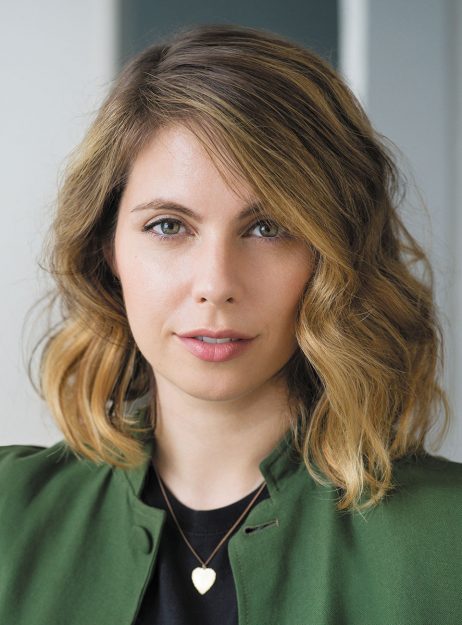
Going back to the book, the group of girls persuade Luke, the gardener, to teach them how to levitate. They’ve heard that it can be done, and also that it can be dangerous without a teacher. But ultimately, having a “teacher” ends very badly. Similarly, in Shambhala, teachers and other people in positions of power have caused a lot of harm.
ET: Depending on how you interpret the ending—and I have decided not to interpret the ending for people—it can be read as putting a lie to the fact that you need a teacher and you can’t find it for yourself. Both ways are possible.
As Buddhists, we’re not supposed to be learning to levitate at all. I think of the story of the acolyte who learned to float across the river and the Buddha says, “Why did you spend years doing that? You could have just paid the ferryman a penny.” But we’re talking about teenagers. They’re like, “Cool. Levitation.” Luke is this stand-in for the figure that you imbue with special power from a distance. He is alluring in many ways—he has attained some kind of spiritual level that they covet, and he’s very attractive and sexy. It’s that charismatic leader thing on a much lower level. I didn’t want an advanced teacher to be the person that was venerated in this book, because I wanted to show that you can be the absolute leader of the community or you can be the guy that works in the garden. Unfortunately.
MR: For me, Luke was such a conglomeration of different men I experienced in Shambhala. Sometimes there’s flirtation, a touching of the arm, or a “smell the freshness of this tomato,” which happened to me in the garden—I was about 15 years old and someone was about six years older than me. I don’t know if you experienced this, Emily, but if there were a bunch of girls around, men would say, “Oh, look at these dakinis” [a fierce feminine force in Tibetan Buddhism].
ET: Mm-hmm.
MR: “Oh, you’re such a little daikini.” This term would make you feel distanced from them, and in some ways they were holding you up but ultimately that language put men at a higher level. I saw those elements coming together in Luke.
ET: Yes, it’s othering—if you’re a mystical being that means you’re not fully a person. The central question for me while writing this book was how much power you have as a teenage girl and as a woman. We often take power away from young women because we think that they don’t know what they’re doing. The reason I chose that age, 16, is that you’re not really a child or an adult. It’s this transitional moment when you have some of both, and you’re just realizing what your power is and can be or isn’t.
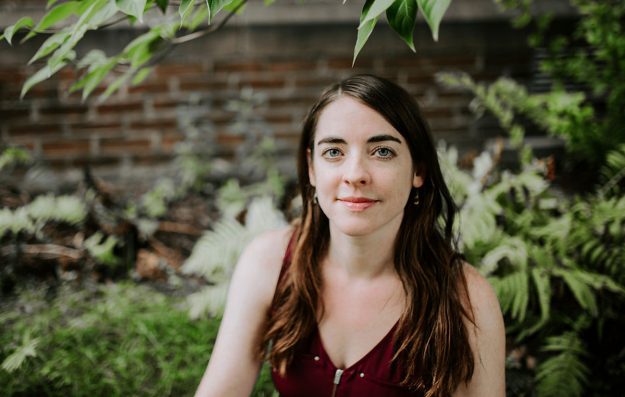
What do you want future Shambhala practitioners to remember about the last few years?
MR: I think that as challenging and as difficult as this time is, it’s also a very liberating time and an opportunity for change to happen. Some of the old stories that were pushed down for so long have been forced into the light. While I have disengaged from the community, I do appreciate the people who have decided to remain and are committed to making changes.
ET: We’ve also seen examples of personal strength and bravery—just that this was brought to light at all, particularly given the samaya vows [a commitment between a student and their teacher] in place, because people had to step over the line that they were told was not to be stepped over.
I hope they can continue shining light on things with this sense of bravery. Because I think what’s at the core of the teachings is very valuable, and we should still share that with people despite the human failings that surround the delivery.
MR: People sharing their stories and taking action is also in line with that bravery. One of my good friends was molested by someone in the community when she was 13, and it wasn’t dealt with through legal authorities—they didn’t go to the police, and he was not supposed to go near her or attend any of the programs she was at. I think she went to therapy…it was pushed down. When all this came out, I made a public post on Facebook saying that I had already left and was there if anyone needed to talk. She had no idea all these other stories had come out, and she called me and she said that for her whole life, she felt like she was the only person that this happened to. We lost touch again after that, but I saw that she pressed charges, and another victim came forward as well, and he has been sentenced. That is one of the bravest things I saw coming out of this on a personal level.
I also think this is a time of people reevaluating their relationship with their teacher. Just because you’ve taken a vow doesn’t mean you have to stay silent if you see a failure of leadership that’s harming people. But unfortunately, what I’ve seen in the Sakyong during this whole time is a vanishing act. He never really apologized for what happened in his letters to the community. [Now there is] is an opportunity for the Sakyong to step up and say, “I’m sorry and I want to make this right,” and I just don’t see that that has happened.
ET: [This time of reevaluation] definitely creates a space for, just as you say, other kinds of leadership. I would love to see more women and people of color in leadership positions. I think that is an obvious step, because it’s just such a monolithic thing right now. And Shambhala is acting as though the scandal is over and things are going back to normal. I would like to be able to look back [on this moment] and say that we didn’t let that happen, that we didn’t, as a community, let things go back to business as usual. But we’ll see.
***
This interview has been edited for length and clarity.
Thank you for subscribing to Tricycle! As a nonprofit, we depend on readers like you to keep Buddhist teachings and practices widely available.
